
Last week we discussed (and hopefully dispelled) many of the myths about the use of Botox. The FDA has approved the cosmetic use of Botox in the Glabellar region or the area between the eyes and forehead.
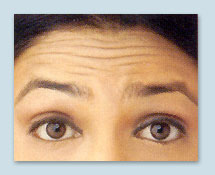
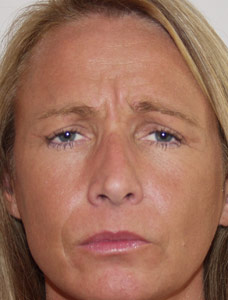
However, off label uses for the medicine have become common place. I like to use it around the eyes to elevate the brow, treat crows feet, and to open the eye to show more of the iris or colored part of the eye. Botox is VERY effective in these areas and due to the small size of the muscles, it requires only a very small amount.
 Notice the "crows feet" around the outer aspect of the eye and the hypertrophy or enlargement of the muscle below the eye. Botox works extremely well to smooth these areas creating a more youthful look.
Notice the "crows feet" around the outer aspect of the eye and the hypertrophy or enlargement of the muscle below the eye. Botox works extremely well to smooth these areas creating a more youthful look.
Another area that can be improved is the neck. Many men and women develop banding of the muscles that lead to wrinkling of the skin. Botox relaxes the muscles that cause the banding and the skin smooths very well.
A third area is around the mouth.
Many people start to form lines around the mouth due to the pursing motion of the muscles around the lips and loss of volume. Smoking, using a straw, pursing the lips all create the lines. When used carefully, Botox can help smooth these areas. Add some volume and the mouth appears much younger. Be warned that it may create some temporary weakness and this should be expected. The chin area can also be smoothed with botox.
Another off label use is for Masseter muscle enlargement.

This can occur due to genetics or teeth clenching. Botox can weaken the muscle and allow it to shrink giving the face a less angular look.
Botox can also be used to treat hyperhydrosis or excessive sweating. The best area to treat is the under arm but it is also effective on the palms and feet. Many people have this problem that cannot be resolved with anti-perspirants. A simple test done at the time of treatment shows where the sweating is most profuse and small amounts of botox are injected. It is very effective and seems to have good longevity....6 months to a year.
These are just a few of the off label uses for Botox. There are many others and more are tried all of the time.
Next week I will discuss volume replacement with dermal fillers and other things such as fat or implants.
Be sure to check our liposuction, nail fungus, and lap band offers. Many are taking advantage of them, saving significant money, and getting GREAT results!!
Cosmetic consultations are complimentary so call today 918-786-7780 or fill out our contact form!







-resized-600.jpg) The channels of fat removed shrink with time and the area smooths and recontours. Without the fat! Vaser and Laser liposuction are technologies that are used to heat the skin so that it shrinks to fit the smaller size of the underlying fat pad. In my experience, using these technologies alone, without revoming the fat, does not give satisfying results and recovery times are about the same....a few days, then soreness for a couple of weeks. The fat that is injured during the procedure and not removed is absorbed by the body.
The channels of fat removed shrink with time and the area smooths and recontours. Without the fat! Vaser and Laser liposuction are technologies that are used to heat the skin so that it shrinks to fit the smaller size of the underlying fat pad. In my experience, using these technologies alone, without revoming the fat, does not give satisfying results and recovery times are about the same....a few days, then soreness for a couple of weeks. The fat that is injured during the procedure and not removed is absorbed by the body.

.jpg) If the nipple is well below this fold then a lift will usually be necessary. If this breast is augmented, the nipple will still hang and the "Snoopy Nose" breast occurs, nice implant with a drooping breast over it. The nipple must be raised and centered either in the breast or placed where it will be in the center of the implant. If the nipple is above the infra-mammary fold then usually only an augmentation is done. When the nipple is at the fold is when good judgement and figuring out what the patient is after, managing expectations, and all the other unmeasureables come into play. For a lift, you will have scars. They usually heal very well and after a little time are fairly inconspicuous, but they are there.
If the nipple is well below this fold then a lift will usually be necessary. If this breast is augmented, the nipple will still hang and the "Snoopy Nose" breast occurs, nice implant with a drooping breast over it. The nipple must be raised and centered either in the breast or placed where it will be in the center of the implant. If the nipple is above the infra-mammary fold then usually only an augmentation is done. When the nipple is at the fold is when good judgement and figuring out what the patient is after, managing expectations, and all the other unmeasureables come into play. For a lift, you will have scars. They usually heal very well and after a little time are fairly inconspicuous, but they are there.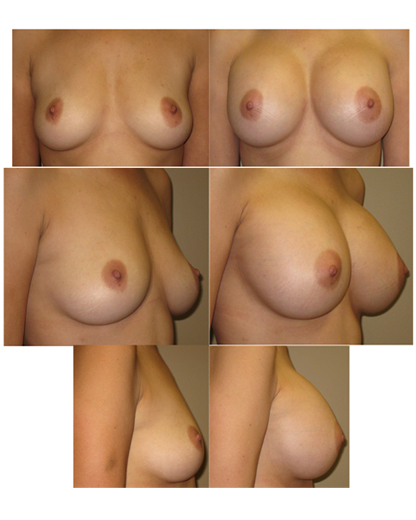 (nipple above the fold-augmentation)
(nipple above the fold-augmentation) Notice the lateral view where the upper pole is sloped after a lift/reduction only.
Notice the lateral view where the upper pole is sloped after a lift/reduction only.


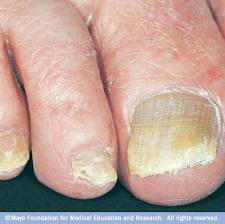.jpg)


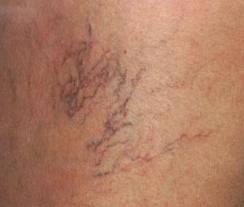 Good news is, when these veins occur, they can be treated. At Total Body Surgical, we have a number of methods for treatment. First, if the problem is extensive, we go out of our way to ensure that the cause is not just a symptom of an underlying bigger vein problem. At the
Good news is, when these veins occur, they can be treated. At Total Body Surgical, we have a number of methods for treatment. First, if the problem is extensive, we go out of our way to ensure that the cause is not just a symptom of an underlying bigger vein problem. At the  I also use the Vein Light to isolate the "reticular" or connecting veins that feed the spider vein. This allows me to see what is feeding the group of spider veins and inject it as well.
I also use the Vein Light to isolate the "reticular" or connecting veins that feed the spider vein. This allows me to see what is feeding the group of spider veins and inject it as well. 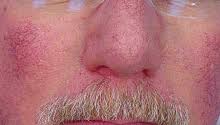.jpg?width=169&height=96&name=images_(2).jpg)
.jpg?width=172&height=98&name=images_(3).jpg) Treatment of spider veins is an ongoing process and should be maintained. Most people with significant spider veins will eventually meet criteria for treatment of the larger veins that are the root of the problem. Patients with facial veins will also need maintenance.
Treatment of spider veins is an ongoing process and should be maintained. Most people with significant spider veins will eventually meet criteria for treatment of the larger veins that are the root of the problem. Patients with facial veins will also need maintenance.



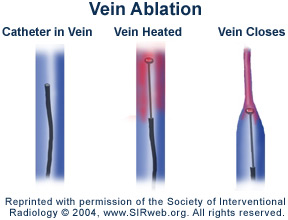
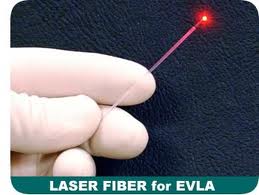



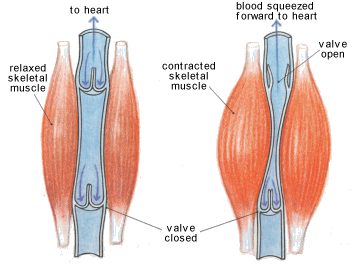 This picture illustrates normal valve activity.
This picture illustrates normal valve activity. The second image shows a comparison of normal with abnormal function. When these valves are defective, the blood is allowed to return down the leg, increasing pressure and causing tributaries to dilate and become tortuous. Spider veins also develope as the pressure causes enlargement of smaller veins in the skin. The disease is not limited to appearance either. This process causes cramping, restless leg syndrome, skin discoloration, rashes, ulceration with secondary infection, swelling, and ultimately, disability.
The second image shows a comparison of normal with abnormal function. When these valves are defective, the blood is allowed to return down the leg, increasing pressure and causing tributaries to dilate and become tortuous. Spider veins also develope as the pressure causes enlargement of smaller veins in the skin. The disease is not limited to appearance either. This process causes cramping, restless leg syndrome, skin discoloration, rashes, ulceration with secondary infection, swelling, and ultimately, disability. 
